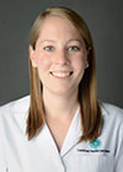 Vaso-Occlusive Crises
Pain Crises
Acute Chest Syndrome – consolidation on CXR AND 1 of these: fever; >2% ↓SpO2, PaO2<60, tachypnea, increased work of breathing, CP, cough, wheezing or rales
Hematologic crises
0 Comments
Your comment will be posted after it is approved.
Leave a Reply. |
Archives
August 2018
Categories
All
|
 RSS Feed
RSS Feed
